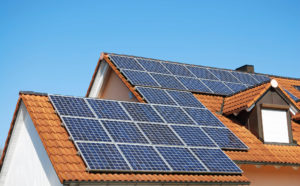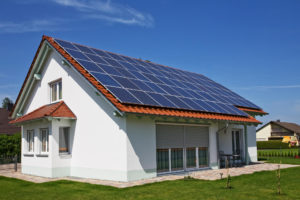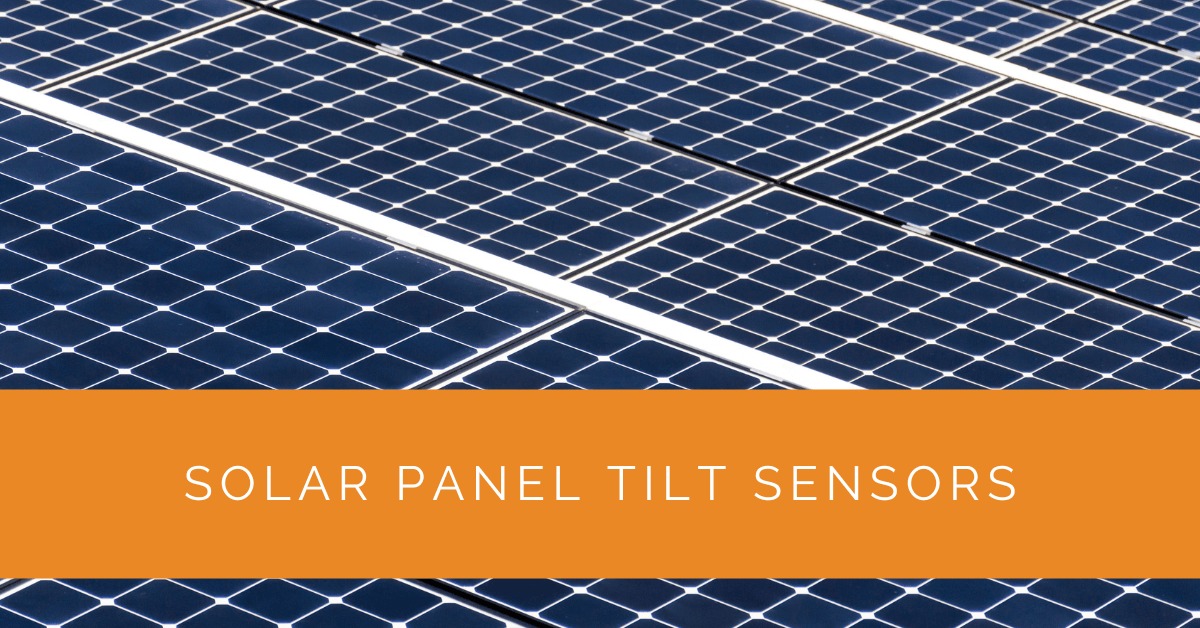Solar energy is a rapidly growing renewable energy source that harnesses the power of the sun to generate clean electricity. One crucial aspect of maximizing solar energy production is optimizing solar panels’ tilt angle and orientation. This article delves into solar panel tilt sensors, exploring their significance in solar tracking systems and how they can enhance solar energy harvesting.
Contents
- 1 Key Takeaways
- 2 Solar Panel Tilt Sensors Explained
- 3 Types of Solar Tracking Systems
- 4 Advancements in Solar Tracking Technologies
- 5 Factors Influencing Tilt Sensor Selection
- 6 Installing Tilt Sensors for Solar Tracking
- 7 Enhancing Solar Efficiency with Tilt Sensors
- 8 Experience Solar Excellence with Us!
- 9 Conclusion
Key Takeaways
- Solar panel tilt sensors are essential in solar tracking systems, optimizing solar panel orientation and maximizing energy capture by following the sun’s movement.
- Dual-axis solar tracking systems offer superior efficiency to fixed or single-axis systems, providing higher energy output in various applications.
- Advancements in tilt sensor technologies, including AI integration and IoT connectivity, promise even greater accuracy and reliability, driving the adoption of efficient solar tracking solutions for a greener future.
Solar Panel Tilt Sensors Explained
What are Solar Panel Tilt Sensors?
Solar panel tilt sensors, also known as inclinometers, are specialized devices designed to measure the tilt angle of solar panels relative to the horizontal plane. These sensors play a vital role in solar tracking systems by providing real-time data on the inclination of solar panels, enabling them to follow the sun’s movement across the sky effectively.
Working Principle of Tilt Sensors in Solar Applications
Tilt sensors utilize various technologies, such as MEMS (Micro-Electro-Mechanical Systems), gyroscopes, or liquid-based inclinometers, to detect changes in the tilt angle of solar panels. These sensors convert the tilt angle into an electrical signal, which the solar tracking system’s controller then processes to adjust the panel’s orientation.
Benefits of Implementing Tilt Sensors in Solar PV Systems
Integrating tilt sensors into solar photovoltaic (PV) systems offers numerous advantages. By continuously measuring the tilt angle of solar panels, the tracking system can ensure that the panels always face the sun directly. This optimization results in increased solar radiation absorption, significantly boosting energy output.
Advantages of Tilt Sensors in Concentrated Solar Power (CSP) Plants
In concentrated solar power (CSP) plants, where mirrors focus sunlight onto a central receiver, precise alignment is critical to maximize energy capture. Tilt sensors play a pivotal role in adjusting the mirrors to maintain the optimal concentration of solar rays onto the receiver, enhancing the overall efficiency of the CSP system.

Types of Solar Tracking Systems
Overview of Solar Tracking Systems
Solar tracking systems are classified based on the number of single or dual axes. Each system type offers distinct features and is suited for different applications.
Fixed vs. Tilted Solar Panel Installations
Fixed solar panel installations have a stationary orientation, often positioned at a fixed tilt angle based on the latitude of the installation site. While this approach is simple and requires less maintenance, it does not fully capitalize on the sun’s movement throughout the day, resulting in suboptimal energy generation.
On the other hand, tilted solar panel installations utilize tilt sensors to adjust the panels’ orientation dynamically. This dynamic tracking allows the panels to follow the sun’s path, optimizing solar radiation absorption and increasing energy yield.
Single-Axis Solar Tracking Systems
Single-axis solar tracking systems track the sun’s movement along one axis, typically the north-south axis (azimuth). These systems adjust the tilt angle of solar panels to follow the sun’s east-to-west path throughout the day. While single-axis systems are cost-effective and relatively easy to implement, they provide limited efficiency gains compared to dual-axis systems.
Dual-Axis Solar Tracking Systems
Dual-axis solar tracking systems are more advanced, as they can adjust the tilt angle of solar panels along the north-south (azimuth) and east-west (elevation) axes. This multi-dimensional tracking ensures that solar panels are always optimally aligned with the sun, leading to significantly higher energy output than fixed or single-axis systems.
Comparative Analysis of Tracking System Types
Factors like installation site location, solar radiation intensity, available space, and budget constraints must be considered to determine the most suitable solar tracking system for a specific application. While single-axis systems may suffice for certain scenarios, dual-axis systems are preferred for maximum efficiency and energy production.
Advancements in Solar Tracking Technologies
Role of Tilt Sensors in Advanced Solar Tracking Mechanisms
As solar tracking technology evolves, tilt sensors become more sophisticated and accurate. Advanced tilt sensors with improved measuring ranges and digital interfaces provide precise tilt angle data, enabling solar tracking systems to respond quickly to changes in solar position and environmental conditions.
Implementing Artificial Intelligence for Real-Time Solar Panel Positioning
Artificial Intelligence (AI) revolutionizes solar tracking systems by analyzing real-time data from tilt sensors, weather forecasts, and solar radiation measurements. AI-powered controllers can dynamically adjust solar panels’ tilt and azimuth angles, optimizing energy capture and ensuring optimal performance under varying weather conditions.
Integrating IoT for Remote Monitoring and Control
The Internet of Things (IoT) technology allows solar panel operators to monitor and control solar tracking systems remotely. By accessing real-time data from tilt sensors through IoT-enabled devices, operators can remotely adjust solar panel orientations, troubleshoot issues, and ensure maximum efficiency without physical intervention.
Future Prospects of Solar Panel Tilt Sensors
The ongoing research and development of tilt sensor technologies promise even greater accuracy, reliability, and cost-effectiveness. As the solar energy sector expands, innovative tilt sensor solutions will play an increasingly crucial role in driving the adoption of efficient solar tracking systems worldwide.

Factors Influencing Tilt Sensor Selection
Considering Geographic Location and Sun Path
The geographic location of a solar installation significantly impacts the sun’s path and its angle of incidence on solar panels. Tilt sensors must be selected based on the specific latitude of the installation site to ensure accurate tracking and optimal energy capture.
Impact of Panel Type and Configuration
Different solar panel types (e.g., monocrystalline, polycrystalline, thin-film) have unique tilt angle requirements for optimal performance. Additionally, tilt sensors must be compatible with various panel configurations, including rooftop installations and ground-mounted arrays.
Environmental Factors Affecting Tilt Sensor Performance
Tilt sensors for solar tracking must be engineered to withstand outdoor conditions, including temperature extremes, moisture, and UV radiation. Robust sensor designs ensure long-term reliability and accurate data acquisition in harsh environmental conditions.
Installing Tilt Sensors for Solar Tracking
Mounting Considerations for Tilt Sensors on Solar Panels
Tilt sensors must be securely mounted on solar panels to withstand wind forces, vibrations, and other external factors. Proper mounting techniques and materials ensure the stability and durability of the sensors throughout their operational life.
Calibration and Accuracy Assessment of Tilt Sensors
Regular calibration and accuracy checks are essential to maintain the reliability of tilt sensors. Calibration procedures involve comparing sensor readings to a known reference, ensuring that tilt measurements remain precise and consistent.
Maintenance and Troubleshooting of Tilt Sensor Systems
Tilt sensor systems require routine maintenance, including cleaning and inspection, to ensure optimal performance. Additionally, operators must be aware of potential issues and troubleshooting methods to address malfunctions or inaccuracies promptly.
Enhancing Solar Efficiency with Tilt Sensors
Analyzing Solar Tracking Data for Performance Optimization
Data collected from tilt sensors provide valuable insights into solar panel performance. By analyzing tracking data, operators can fine-tune solar panel angles, make informed adjustments, and optimize energy output, ultimately improving the overall efficiency of solar installations.
Financial Benefits of Efficient Solar Tracking with Tilt Sensors
Maximizing solar energy production through precise tracking has significant financial benefits for solar panel owners. Higher energy yields result in shorter payback periods, increased return on investment, and a more sustainable business model for renewable energy ventures.
Experience Solar Excellence with Us!
Trust in Solar Panels Network USA, where our seasoned experts deliver top-quality solar solutions for homes and businesses nationwide. With a legacy of countless successful installations and a commitment to sustainable energy, we’re your reliable partner in the solar journey. Ready for a brighter, eco-friendly future? Call us now at (855) 427-0058 and harness the power of the sun!
Conclusion
Solar panel tilt sensors are essential in modern solar tracking systems, enabling solar panels to follow the sun’s movement and optimize energy capture efficiently. From single-axis to advanced dual-axis systems, selecting the right solar tracking solution, supported by accurate and reliable tilt sensors, can significantly enhance the performance of solar installations. As technology advances, the future of solar panel tilt sensors promises even greater efficiency, reliability, and sustainability for the global renewable energy landscape. By embracing innovative solar tracking technologies, we move closer to a greener, more sustainable future powered by solar energy.
Solar energy’s immense potential to reduce greenhouse gas emissions and promote a cleaner planet remains a central focus of research, innovation, and policy initiatives. As the solar industry continues to grow, the role of tilt sensors in solar tracking systems will become even more critical. By harnessing the power of sunlight with precise tilt angle measurements, we pave the way for a brighter and greener tomorrow.
About the Author
Solar Panels Network USA stands at the forefront of solar energy solutions, driven by a team of seasoned solar engineers and energy consultants. With over decades of experience in delivering high-quality solar installations and maintenance, we are committed to promoting sustainable energy through customer-centric, tailored solutions. Our articles reflect this commitment, crafted collaboratively by experts to provide accurate, up-to-date insights into solar technology, ensuring our readers are well-informed and empowered in their solar energy decisions.

